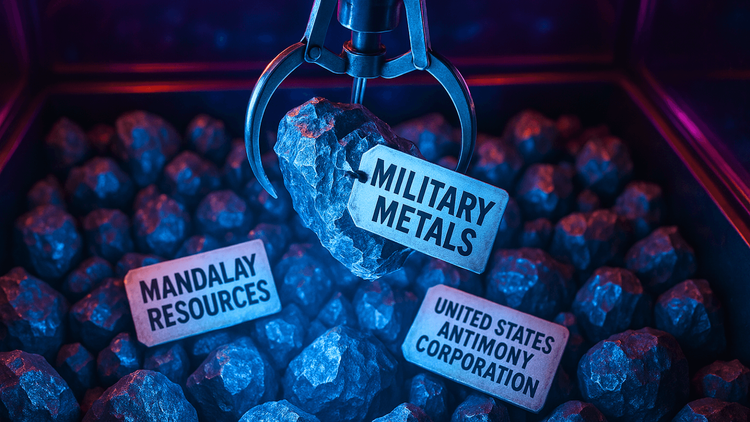Nuclear Power to Supply 22% of Italy's Electricity by 2050
Italy Aims for 22% Nuclear Power by 2050: A Bold Step Towards Energy Independence and Sustainability

Italy is on the cusp of a nuclear renaissance. Gilberto Pichetto Fratin, Italy's Minister for Environment and Energy Security, recently unveiled the nation’s ambitious plans at the Global Energy Transition Congress in Milan. He highlighted the potential for nuclear energy to supply up to 22% of Italy's electricity by 2050, marking a significant shift in the country’s energy strategy.
Historical Context
Italy's relationship with nuclear power has been tumultuous. In the 1960s, the country embraced nuclear energy, but following the Chernobyl disaster in 1986, a national referendum led to the shutdown of its nuclear plants. The final blow came after the Fukushima Daiichi incident in 2011, which resulted in a moratorium on nuclear plant construction. However, the tide is turning. In May 2023, the Italian Parliament approved a motion urging the government to reconsider nuclear power as part of the country's energy mix. This shift is driven by the need for sustainable and reliable energy sources to meet future demands and climate goals.
Italy’s National Integrated Energy and Climate Plan
Italy's National Integrated Energy and Climate Plan, submitted to the European Commission, outlines a comprehensive strategy for the country's energy future. It includes ambitious targets for both renewable energy and nuclear power, aiming to create a balanced and sustainable energy portfolio. The plan sets a conservative target of 8 GW of nuclear power capacity by 2050, potentially covering over 10% of the nation’s electricity needs. Optimistically, this could rise to 16 GW, supplying up to 22% of Italy's electricity. In parallel, Italy aims to significantly boost its renewable energy capacity to 131 GW by 2030. This includes 79 GW from solar, 28 GW from wind, 19 GW from hydro, 3 GW from bioenergy, and 1 GW from geothermal sources.
Technological Innovations in Nuclear Power
A cornerstone of Italy's nuclear strategy is the deployment of Small Modular Reactors (SMRs). These advanced reactors are designed to be safer, more efficient, and quicker to build than traditional large reactors. SMRs can be integrated into smaller grids and are less prone to catastrophic failures. Looking further ahead, Italy is investing in fusion power. While still in the developmental phase, fusion promises a nearly limitless and clean energy source. If successful, fusion could revolutionize Italy's energy landscape. Advanced nuclear technologies, including SMRs and fusion, offer numerous benefits. They provide a stable and continuous power supply, complementing intermittent renewable sources like solar and wind. Additionally, these technologies have a smaller environmental footprint and enhanced safety features.
Potential Benefits of Nuclear Power
Nuclear power can significantly enhance Italy's energy security. By reducing dependency on imported fossil fuels, Italy can ensure a more stable and reliable energy supply. Nuclear energy is a low-carbon power source, crucial for meeting Italy's climate goals. It can play a vital role in reducing greenhouse gas emissions and combating climate change. Investing in nuclear power can stimulate economic growth. It can create high-skilled jobs, foster technological innovation, and attract international investments. Additionally, the estimated cost of achieving Italy's climate goals is EUR17 billion lower with nuclear energy than without it.
Challenges and Considerations
One of the primary challenges is public acceptance. Overcoming the historical stigma associated with nuclear power requires transparent communication about safety, benefits, and technological advancements. Safety remains a paramount concern. Ensuring robust safety measures and addressing environmental impacts are critical to gaining public trust and regulatory approval. Nuclear projects are capital-intensive and require significant upfront investment. Navigating the regulatory landscape and securing financing are essential for the successful deployment of nuclear power.
Key Players and Stakeholders
The Italian government plays a pivotal role in shaping the nuclear energy policy. Its support and strategic planning are crucial for the program's success. Companies like Newcleo are at the forefront of developing advanced nuclear technologies. Their innovations in SMR and fusion technologies are key to Italy's nuclear future. Collaborating with international partners can provide Italy with access to cutting-edge technologies, expertise, and financial resources.
Future Projections
In the short term, Italy aims to lay the groundwork for its nuclear program. This includes setting up regulatory frameworks, securing funding, and initiating pilot projects. By 2040, Italy expects to have several SMRs operational, contributing significantly to the national grid. This period will also see advancements in fusion technology. By 2050, Italy envisions a robust nuclear energy sector, providing up to 22% of its electricity. This will complement a mature renewable energy infrastructure, ensuring a sustainable and secure energy future.
Conclusion
Italy stands at a critical juncture in its energy journey. Embracing nuclear power, alongside renewable energy, offers a path to a sustainable, secure, and economically vibrant future. The potential benefits are immense, but the journey will require careful planning, robust safety measures, and broad public support. Italy’s nuclear renaissance could very well be the cornerstone of its energy strategy for decades to come.






